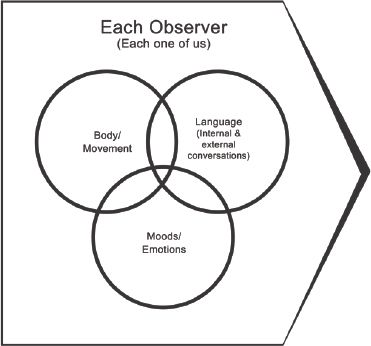We don’t see things as they are, we see them as we are.
Anaïs Nin
In ontological coaching, each of us is a unique observer of our environment. No two people will see the world in the same way because of who they are or our way of being.
Second Order Learning involves observing how we observe.
BEL Model

In the body-emotions-language (BEL) model in ontological coaching, our way of being consists of 3 interconnected elements:
- Body: how we move through space, posture, health
- Emotions: the emotions and moods which are predispositions to action
- Language: what we say, our external and internal conversations and stories. Two people could have similar biologies but see the world very differently due to language
Though we can talk about each element of the BEL separately, they are interconnected and congruent. For example, try slumping forward and saying “I had such a great day”. The body does not match or is not congruent to what is being said.
Because of this congruency, each of the elements of the BEL could be used as doorways to design change into the others. For example, exercise makes you feel better (emotions) which would change how what you think and say (language). We can invent new conversations to affect how we feel over time. We can listen to music to change how we feel, our posture and what we say.
We are not detached observers. We are very concerned observers because we want certain results in our lives. The world doesn’t have problems. Problems and solutions are a function of the observer.
We always act consistently with the observer that we are. This means that the actions being taken and the results being achieved can be used to understand how we observe.